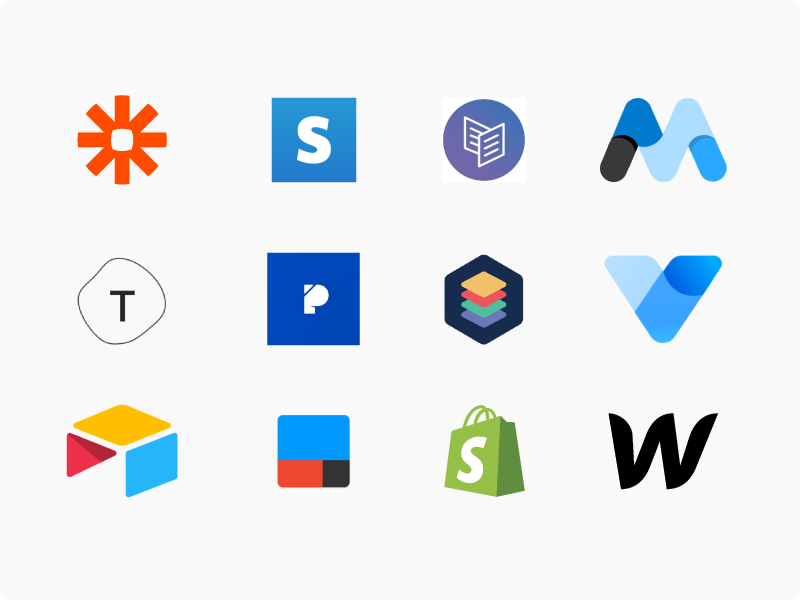No-Code Open Platform Data Source Development: Simplify Facility Advancement Tasks
No-Code Open Platform Data Source Development: Simplify Facility Advancement Tasks
Blog Article
Discover Just How Scalable Data Sources Can Be Utilized Without Coding to Enhance Your Organization Operations
In today's fast-paced business setting, the capability to handle and examine information effectively is extremely important. no-code. Scalable data sources, specifically when coupled with no-code solutions, offer a transformative approach that encourages non-technical customers to simplify procedures.
Recognizing Scalable Databases
Scalable data sources are important for modern-day organization operations, allowing companies to effectively manage boosting volumes of data without giving up performance. These data sources are designed to adapt and expand to the altering needs of a company, making certain that they can deal with bigger datasets and more complicated queries as business demands progress.
Understanding scalable databases includes acknowledging their 2 main types: upright scaling and straight scaling. Upright scaling, or "scaling up," involves adding more power (CPU, RAM) to an existing server to improve efficiency. Conversely, horizontal scaling, or "scaling out," involves including much more web servers to distribute the lots, which commonly causes higher adaptability and mistake tolerance.
One more vital element is the design of scalable databases, which can be either non-relational or relational. Relational data sources, such as MySQL and PostgreSQL, are structured and utilize SQL for inquiries, while non-relational databases, like MongoDB and Cassandra, supply even more flexibility with unstructured information.
Inevitably, understanding scalable data sources is vital for companies aiming to leverage information as a strategic property, allowing them to stay competitive in an increasingly data-driven environment.

Advantages of No-Code Solutions
Opening the capacity of no-code solutions equips businesses to enhance operations and improve performance without the need for substantial shows knowledge. These platforms permit non-technical customers to create, customize, and take care of databases effortlessly, thus equalizing accessibility to technology across groups.
Among the primary benefits of no-code options is their speed of implementation. Services can swiftly release applications and automate procedures, significantly decreasing the time spent on advancement cycles. This dexterity allows companies to react immediately to market adjustments and consumer demands, cultivating an affordable side.
Additionally, no-code platforms decrease reliance on IT divisions for day-to-day jobs, permitting technical groups to concentrate on more complicated jobs that call for specialized skills. This change not only maximizes source allocation however likewise advertises innovation within the organization.
Cost-effectiveness is one more advantage, as no-code services can lower development and upkeep costs. By lessening the requirement for coding expertise, companies can harness the capabilities of their existing labor force without the expenses of employing additional workers.
Popular No-Code Database Tools
The surge of no-code solutions has brought about the introduction of different data source devices that accommodate services looking for performance and availability. These tools encourage customers with limited technical know-how to create, handle, and manipulate data sources seamlessly.

Caspio stands apart for its capability to develop internet applications with no coding. It permits organizations to create robust databases and deploy applications promptly, catering click reference to different market demands. Flair offers straightforward interfaces and effective data monitoring abilities, Our site allowing organizations to construct custom-made applications tailored to their process.
Use Instances in Organization Procedures
How can services utilize database tools to boost their operations? Scalable data sources give organizations with powerful abilities to manage and examine data without the requirement for substantial coding knowledge. These devices can streamline different company procedures, ultimately causing boosted efficiency and performance.
One popular use case is customer partnership management (CRM) Organizations can utilize scalable data sources to track client communications, preferences, and responses, allowing customized interaction and better service. By systematizing this details, groups can work together better and respond to customer requirements in real-time.
Another substantial application is stock monitoring. Companies can use no-code database devices to keep track of supply levels, track deliveries, and forecast demand. This makes certain optimum stock degrees, decreases waste, and decreases stockouts.
Furthermore, task administration can gain from scalable databases by permitting groups to take care of tasks, deadlines, and sources in a combined system. With real-time updates and data visualization, task managers can make enlightened decisions.
Starting With Execution
Implementing scalable data sources in service operations calls for a structured technique to make certain successful assimilation and usage. The primary step is to carry out a comprehensive needs analysis, determining details business requirements, information kinds, and expected growth patterns. This foundational understanding will guide the selection of the proper data source remedy.
Following, choose a straightforward, no-code data source system that aligns with your functional objectives. no-code. Many modern-day remedies offer intuitive interfaces, enabling non-technical individuals to handle data successfully. After selecting a platform, develop a clear information architecture that lays out how information will certainly be organized, accessed, and preserved
Training is essential; make sure that staff member are furnished with the needed abilities to use the data source. Think about supplying tutorials or workshops to acquaint team with the system's performances.
Conclusion
In verdict, the assimilation of scalable data sources through no-code options presents substantial benefits for business operations. Eventually, leveraging these innovations can lead to enhanced performance and functional efficiency, positioning companies for sustained get more growth in a competitive landscape.
One popular no-code data source device is Airtable, which integrates the capability of a spread sheet with the power of a database.Just how can businesses take advantage of database tools to enhance their operations? Companies can use scalable databases to track customer communications, preferences, and responses, enabling individualized interaction and better service.Executing scalable data sources in business operations needs an organized strategy to ensure successful assimilation and utilization.In final thought, the assimilation of scalable data sources via no-code services provides substantial advantages for company procedures.
Report this page